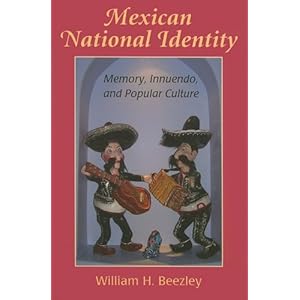America Isn't the Only Country Celebrating Its Revolution

Throughout 2010, Mexicans have been celebrating both the bicentennial of independence from Spain and the centennial of the 1910 Mexican Revolution, a popular insurrection that was the world’s first social revolution. The 1910 revolution has been defiled in the last two decades of the twentieth century by its official party, the Institutional Revolutionary Party, which fossilized into an authoritarian government. When, however, power was in the hands of revolutionary veterans from 1910-1946, they reshaped national government, provided somewhat expanded political opportunities, but this was not their main focus. The revolutionaries devoted their primary attention to what Hannah Arandt, in her classic On Revolution, called the social question: that is, poverty, misery, and want, and as they did so, they created a social revolution seven years before the Russians, forty years before the Chinese, and fifty years before Cuba.
I do not mean to suggest the revolutionaries had a unified vision for Mexico. They did not. What began as a revolution in 1910 quickly became a civil war between successive insurgents that continued until 1920, and even then the violence did not end. A major rebellion took place in 1923 and a Catholic uprising against the regime, called the Cristero War, followed in 1926-1929. During the first decade, some 2 million people, or about one in seven Mexicans, were lost through war, deprivation, disease, and migration. Each of the prominent revolutionary leaders—Francisco Madero; Venustiano Carranza; the populist chiefs Pancho Villa and Emiliano Zapata; and the rather bourgeois Alvaro Obregón—led substantial portions of the population, and each fell victim to assassination. Despite the deadly cleavages within the revolutionary ranks, enough unity existed to write a new constitution in 1917.
The new constitution focused on land reform (those who work the land should own it), labor rights (unions, safety regulations, fair wages, and regulation of child and female work), personal security (reasonable prices for food, housing, and health care), basic education, judicial equity, and protection from the intrusion in everyday life of both the Catholic Church and foreign businesses. These provisions attempted the full social and economic incorporation of all groups, but especially the indigenous, with the ideological backing called the Cosmic Race—the mixed ethnic and cultural ideals of the revolutionary nation. Of course, all of these constitutional statements required enabling legislation and enforcement, and efforts to do just that resulted in the continuing violence that characterized Mexico into World War II.
The revolutionary presidents focused on three or four goals and attempted to make them work. Obregón, president from 1920 to 1924, initiated land reforms, attempted to demilitarize the nation, and fostered labor organization. His successor, Plutarco Calles, from 1924-1928 challenged the Catholic Church, particularly through the schools with his program of socialist education. Calles’s efforts provoked the Cristero Rebellion, but he continued on with the anticlerical campaign while continuing land reform and encouraging his preferred umbrella union to demand improvements for workers. Three presidents followed, each serving two years, and fostering their individual revolutionary agendas, leading to the apogee of the social revolution under President Lázaro Cárdenas, 1934-1936.
Cárdenas was a populist leader who built a personal political following by campaigning across the country, although it was hardly necessary as his election was assured. Wherever he traveled, he attended to the problems and hopes of villagers. He continued this practice once in office by allowing a period, once a week, when citizens could telegraph him free of charge about the needs of their communities. Cárdenas invigorated the land reform project, redistributing more land than all his successors combined, cut down on strikes, but assisted in realizing the constitution’s goals for working people. He also expanded education, although he was forced to reduce the socialist character of the primary school programs. In addition, he directly acted against foreign corporations that continued to operate in Mexico when the petroleum companies refused to adhere to both presidential directives and Supreme Court decisions against them. On March 18, 1938, he expropriated the oil industry in what was immediately interpreted as Mexico’s declaration of economic independence. His hugely successful administration was celebrated in the mariachi music that he promoted. The presidential tie made mariachi the national music. The Cárdenas momentum continued through the administration of Manuel Avila Camacho and World War II. The revolution ended in 1946, with the arrival of a new generation, the sons and daughters of the old revolutionary hands.
The revolution made Mexico a very different place; it created among rural, disinherited men and women, urban exploited workers, and indigenous people regarded as pariahs a sense of new opportunities made possible by their own efforts. Their value to the nation was celebrated in monumental murals that now graced public buildings, in songs of their achievements, and, in a more practical sense, by having their own land or receiving larger paychecks as they ate better, had better housing, and lived longer and healthier lives. During the thirty-five year repressive regime that preceded the 1910 Revolution, many peon workers were expected to demonstrate their subordination to the great landowner when he visited by kissing the palm of his hand. Once these men and women became revolutionaries, they seized their nation and its resources. Perhaps their greatest sense of freedom of action, of achievement, and of the possible was expressed through public displays of affection. On street corners, on park benches, and in café and restaurants, in the new world they had created, they kissed. This, indeed, merits a celebration.